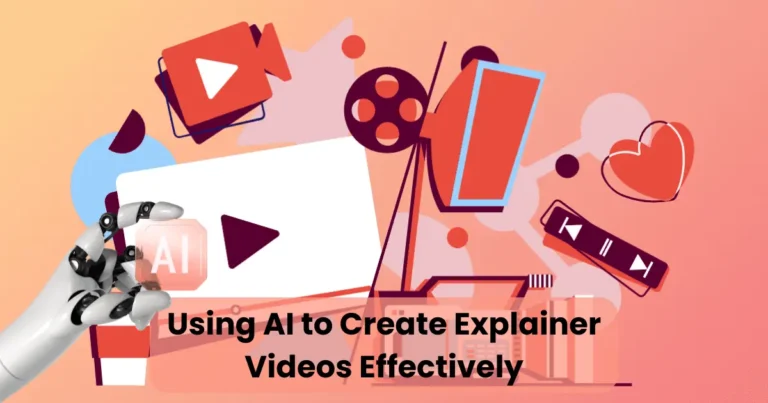How to Animate Conversations: Tips for Engaging Dialogue

Contents
- 1 Why Animating Conversations Matters
- 2 Key Strategies to Animate Conversations
- 3 Overcoming Common Conversation Challenges
- 4 Applying Conversation Animation in Different Contexts
- 5 Tools and Resources to Enhance Conversation Skills
- 6 Common Mistakes to Avoid
- 7 Measuring the Success of Animated Conversations
Conversations are the heartbeat of human connection, and learning how to animate conversations can transform dull exchanges into vibrant, memorable interactions. Whether you’re a public speaker, a content creator, a team leader, or simply someone who wants to make everyday chats more engaging, mastering the art of lively dialogue is a game-changer. In this guide, we’ll explore practical strategies to breathe life into your conversations, ensuring they captivate and inspire. By incorporating storytelling, active listening, and dynamic delivery, you can maximize the impact of your interactions and leave a lasting impression.
Why Animating Conversations Matters
Engaging conversations foster stronger relationships, spark creativity, and drive meaningful outcomes. When you animate conversations, you create an environment where ideas flow freely, and participants feel valued. This skill is essential in various contexts, from professional settings to casual social gatherings. For instance, animated conversations during a business meeting can boost team morale, while lively chats at a social event can forge deeper connections. Moreover, animated dialogue keeps listeners hooked, making it easier to convey your message effectively.
Benefits of Animated Conversations
- Enhanced Engagement: Lively conversations hold attention and encourage active participation.
- Stronger Connections: Animated dialogue builds trust and rapport with others.
- Improved Communication: Dynamic exchanges clarify ideas and reduce misunderstandings.
- Memorable Impact: Engaging conversations leave a lasting impression on your audience.
By mastering how to animate conversations, you unlock these benefits and create interactions that resonate long after the discussion ends.
Key Strategies to Animate Conversations
To make your conversations more dynamic, you need a blend of preparation, delivery, and adaptability. Below, we outline proven techniques to help you captivate your audience and maximize the energy in every dialogue.

1. Master the Art of Storytelling
Storytelling is a powerful tool to animate conversations. A well-told story captivates listeners, evokes emotions, and makes your message relatable. To incorporate storytelling effectively:
- Start with a Hook: Begin with an intriguing statement or question to grab attention. For example, “Have you ever wondered why some conversations stick with you forever?”
- Use Vivid Details: Paint a picture with descriptive language to immerse your audience.
- Keep It Relevant: Tie your story to the conversation’s topic to maintain focus.
- Add Emotion: Share personal anecdotes or emotional insights to connect with listeners.
For instance, if you’re discussing a work project, share a brief story about a past success or challenge to illustrate your point. This approach not only animates the conversation but also makes it more memorable.
2. Practice Active Listening
Active listening is the foundation of any engaging conversation. When you truly listen, you show respect and create space for meaningful dialogue. To practice active listening:
- Maintain Eye Contact: Show you’re engaged by looking at the speaker.
- Nod and Respond: Use nonverbal cues like nodding or brief affirmations to acknowledge their points.
- Ask Follow-Up Questions: Demonstrate interest by asking thoughtful questions related to their input.
- Paraphrase Key Points: Restate what you’ve heard to confirm understanding.
By actively listening, you make the other person feel valued, which naturally animates the conversation and encourages reciprocal engagement.
3. Use Dynamic Body Language
Your body language can significantly enhance how you animate conversations. Nonverbal cues amplify your message and convey enthusiasm. To use body language effectively:
- Gesture Naturally: Use hand movements to emphasize key points, but avoid overdoing it.
- Lean In Slightly: Show interest by leaning toward the speaker during key moments.
- Smile and Express Emotion: A genuine smile or expressive face adds warmth to the dialogue.
- Mirror Subtly: Reflect the other person’s body language to build rapport without mimicking.
For example, when sharing an exciting idea, lean forward and use expressive gestures to convey your enthusiasm. This approach makes the conversation feel more dynamic and engaging.
4. Vary Your Vocal Delivery
Your voice is a powerful tool to animate conversations. A monotone delivery can bore listeners, while a varied tone keeps them engaged. To enhance your vocal delivery:
- Adjust Your Pitch: Use a higher pitch for excitement and a lower one for serious points.
- Vary Your Pace: Speed up to convey enthusiasm and slow down for emphasis.
- Use Pauses Effectively: Pause after key points to let them sink in.
- Emphasize Key Words: Stress important words to highlight your message.
For instance, when sharing a surprising fact, slow your pace and lower your pitch to create suspense. These vocal variations make your conversations more lively and impactful.
5. Ask Open-Ended Questions
Open-ended questions spark deeper discussions and keep the conversation flowing. Unlike yes-or-no questions, they encourage elaboration and creativity. To craft effective open-ended questions:
- Focus on “How” and “Why”: For example, “How do you approach creative problem-solving?” invites detailed responses.
- Encourage Reflection: Ask questions like, “What’s the most memorable conversation you’ve ever had?”
- Invite Opinions: Questions such as, “What do you think about this idea?” foster collaboration.
- Avoid Leading Questions: Keep questions neutral to allow authentic responses.
By incorporating open-ended questions, you create opportunities for meaningful exchanges that animate conversations naturally.
6. Inject Humor and Lightness
Humor can instantly animate conversations by breaking the ice and creating a relaxed atmosphere. However, it’s essential to use humor appropriately:
- Keep It Relevant: Share light-hearted anecdotes or witty remarks tied to the topic.
- Know Your Audience: Avoid sensitive topics or offensive jokes.
- Use Self-Deprecation Sparingly: Light self-deprecating humor can build relatability, but don’t overdo it.
- Read the Room: Gauge the mood to ensure humor lands well.
For example, during a team meeting, a playful comment like, “I’m pretty sure my coffee is the only thing keeping this conversation alive today!” can lighten the mood and encourage engagement.
7. Adapt to Your Audience
Every conversation is unique, and adapting to your audience is key to keeping it animated. Consider their interests, background, and communication style:
- Tailor Your Language: Use terms and examples that resonate with your audience.
- Match Their Energy: If they’re enthusiastic, mirror their excitement; if they’re reserved, adopt a calmer tone.
- Be Culturally Sensitive: Respect cultural differences in communication styles.
- Adjust to Context: A casual chat with friends requires a different approach than a formal business discussion.
For instance, when speaking with a younger audience, you might use modern slang or pop culture references to animate the conversation effectively.
8. Incorporate Visual Aids or Props
In certain settings, visual aids or props can enhance your ability to animate conversations. Whether it’s a presentation slide, a quick sketch, or a physical object, visuals add a dynamic element:
- Use Simple Visuals: A quick chart or image can clarify complex ideas.
- Engage with Props: For example, holding up a product sample during a sales pitch can spark interest.
- Keep It Relevant: Ensure visuals support the conversation’s purpose.
- Don’t Overload: Too many visuals can distract from the dialogue.
For example, during a brainstorming session, sketching ideas on a whiteboard can make the conversation more interactive and engaging.
Overcoming Common Conversation Challenges
Even with the best intentions, conversations can sometimes stall or become awkward. Here’s how to address common challenges to keep the dialogue lively:

1. Handling Interruptions
Interruptions can disrupt the flow of a conversation. To manage them gracefully:
- Acknowledge Politely: Say, “I’d love to hear your thoughts—let me finish this point first.”
- Stay Calm: Avoid reacting defensively to maintain a positive tone.
- Redirect the Focus: Gently guide the conversation back to the main topic.
By handling interruptions with tact, you keep the conversation animated and respectful.
2. Reviving a Stalled Conversation
If the dialogue starts to fizzle, use these tactics to reignite it:
- Shift Topics: Introduce a new, related topic to spark interest.
- Ask a Bold Question: For example, “What’s the one thing you’d love to learn about this topic?”
- Share a Fun Fact: A surprising tidbit can re-engage listeners.
- Use Humor: A light-hearted comment can break the tension.
These strategies help you animate conversations even when they hit a lull.
Sensitive topics can make conversations tense. To keep them animated yet respectful:
- Stay Neutral: Avoid taking strong stances that could alienate others.
- Listen Actively: Show empathy by acknowledging others’ perspectives.
- Redirect Tactfully: Shift to a safer topic if the discussion becomes too heated.
- Set Boundaries: Politely state if a topic is off-limits for you.
By navigating sensitive topics with care, you maintain a positive and engaging dialogue.
Applying Conversation Animation in Different Contexts
The ability to animate conversations is valuable in various scenarios. Here’s how to apply these techniques in specific settings:

1. Professional Settings
In workplaces, animated conversations can boost collaboration and productivity. To animate professional discussions:
- Start Meetings with Energy: Open with a quick story or question to set a positive tone.
- Encourage Participation: Use open-ended questions to involve team members.
- Use Visuals: Share charts or slides to make complex ideas engaging.
- Summarize Key Points: End with a clear recap to maintain momentum.
For example, during a project update, share a brief success story to animate the conversation and inspire your team.
2. Social Gatherings
Social conversations thrive on warmth and relatability. To animate them:
- Share Personal Stories: Relatable anecdotes create instant connections.
- Use Humor: Light-hearted jokes keep the mood upbeat.
- Ask About Interests: Questions like, “What’s your favorite thing to chat about?” spark lively exchanges.
- Be Inclusive: Ensure everyone has a chance to contribute.
For instance, at a party, sharing a funny travel story can animate the conversation and draw others in.
3. Public Speaking
When addressing a large audience, animating conversations is critical to keeping listeners engaged:
- Open with Impact: Start with a bold statement or question to grab attention.
- Use Vocal Variety: Vary your tone and pace to maintain interest.
- Involve the Audience: Ask questions or encourage responses to create interaction.
- Tell Stories: Share relatable anecdotes to connect with the crowd.
For example, during a keynote speech, starting with a personal story can animate the conversation and captivate your audience.
Tools and Resources to Enhance Conversation Skills
To further refine your ability to animate conversations, consider these tools and resources:

- Books: Read Crucial Conversations by Patterson, Grenny, McMillan, and Switzler for insights on effective dialogue.
- Courses: Platforms like Coursera or Udemy offer communication skills courses.
- Apps: Use apps like Orai to practice public speaking and vocal delivery.
- Workshops: Attend local or virtual workshops on storytelling or improv to hone your skills.
These resources can help you master how to animate conversations with confidence and flair.
Common Mistakes to Avoid
While learning to animate conversations, steer clear of these pitfalls:
- Talking Too Much: Dominating the conversation can disengage others.
- Ignoring Nonverbal Cues: Failing to notice boredom or discomfort can derail dialogue.
- Overusing Humor: Inappropriate or excessive humor can alienate listeners.
- Being Inauthentic: Forced enthusiasm or fake stories can come across as insincere.
By avoiding these mistakes, you ensure your conversations remain engaging and genuine.
Measuring the Success of Animated Conversations
To gauge how well you’re animating conversations, look for these signs:
- Active Participation: Are others contributing eagerly to the discussion?
- Positive Feedback: Do listeners compliment your engaging style?
- Lasting Impact: Do people remember and reference your conversations later?
- Stronger Connections: Are you building rapport and trust with others?
Regularly assess these indicators to refine your approach and maximize your conversation’s impact.
Conclusion
Learning how to animate conversations is a skill that transforms interactions into dynamic, memorable experiences. By mastering storytelling, active listening, dynamic body language, and vocal variety, you can captivate any audience. Additionally, adapting to your audience, using humor wisely, and navigating challenges ensure your conversations stay engaging. Whether in professional settings, social gatherings, or public speaking, these techniques will help you create dialogue that inspires and connects. Start practicing today, and watch your conversations come to life with energy and impact.






